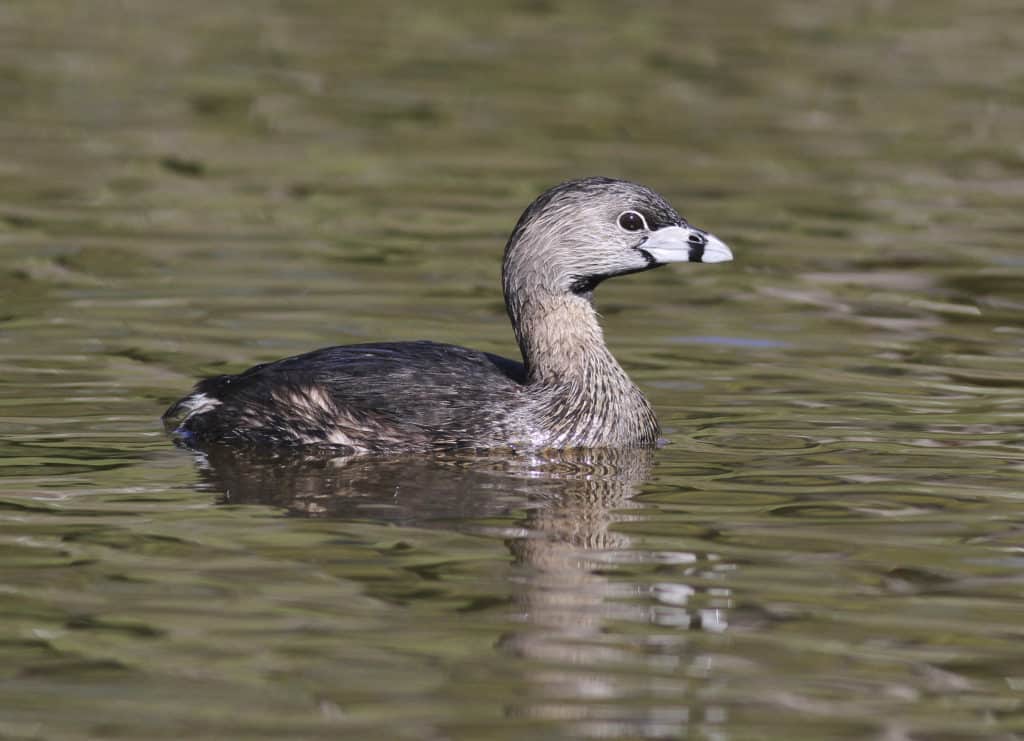Creature Feature: Pied-billed Grebe

While taking a hike around Centennial Lake in Howard County, I noticed a very small bird, a pied-billed grebe swimming near the shoreline. It would suddenly jump into a dive and quietly emerge several minutes later some 50 to 100 feet away. I planned to get a close photo by hurrying toward it as soon as it went under and standing still after a minute so it would not see movement when it came up.
There were trees along the edge of the water so I thought the plan was going to work. Those little birds are tricky though. After several cycles of it diving and me moving closer, it went underwater and I moved to where I predicted it would emerge, but after five minutes it never came up.
I looked all around and found it blocks away in the opposite direction from where I started. As I stood up and considered following it again, the bird looked at me and cocked its head to the side, stared at me and flew to the opposite side of the lake.
I have been told that in clear water the little grebe walks on underwater vegetation and slowly sticks its nostrils out of the water like a periscope to try to avoid being detected.
The brownish-gray birds are a little smaller than a robin and have large webbed feet. They have difficulty walking on land and therefore are rarely found out of the water.
The pied-billed grebe gets its name from its two-toned bill, striped vertically in gray and black. The bill is most noticeable during breeding season. It is thick and strong enough to crush crayfish, snails and beetles. The little birds feed on almost anything aquatic including fish, frogs and small snakes.
It lives on clear freshwater lakes or brackish areas in Maryland year-round but in spring and fall its numbers swell as the northern flocks migrate through.
Grebes prefer quiet waters without much boat traffic because of the way they build their nests: they lay their eggs in nests built on floating vegetation easily dumped over by a passing motorboat.
In the summer, two to 10 chicks will hatch and almost immediately climb on to their parent’s back. Both parents take turns with the offspring as the other hunts for food. In the presence of danger, the parents will disappear into deep water. The chicks mature fairly quickly, swimming on their own within a few days and chase any small thing that moves. As they become independent the adults will chase them away to have a second brood.
They are fairly common birds and do not need protection, but it’s worth thinking twice before driving a ski-boat too close to a quiet cove with floating vegetation.
